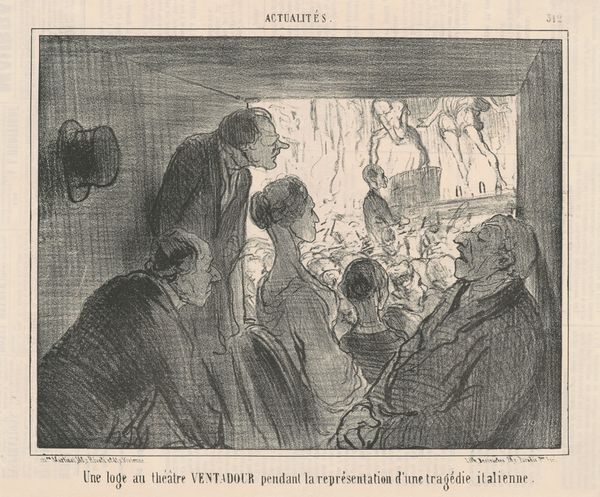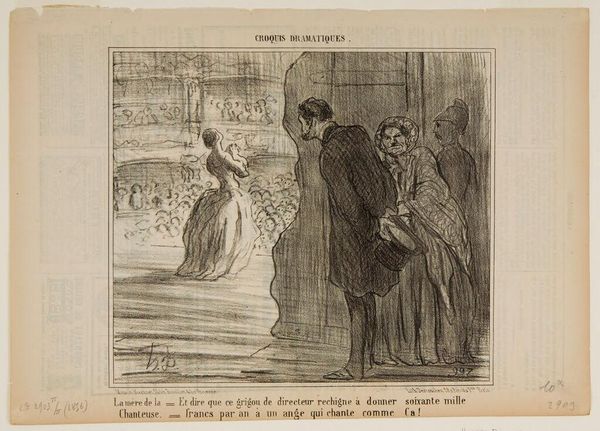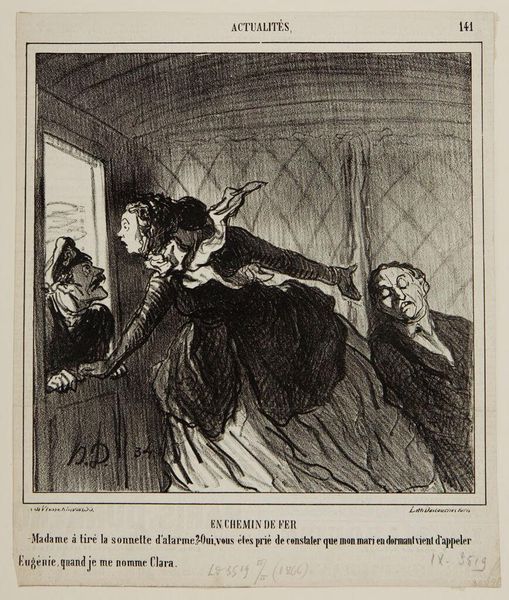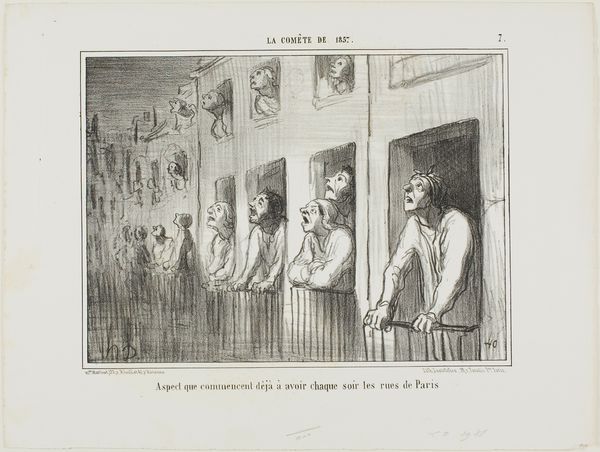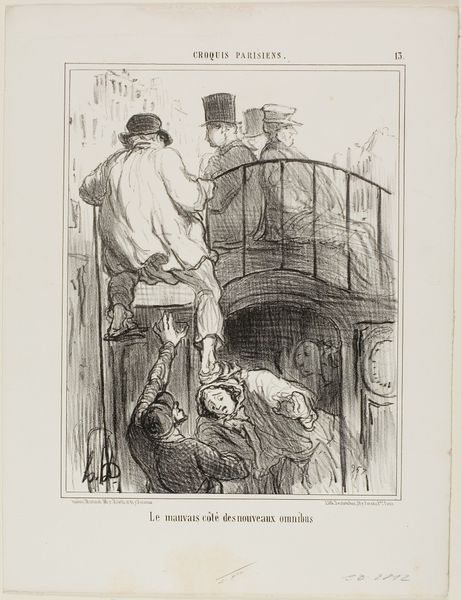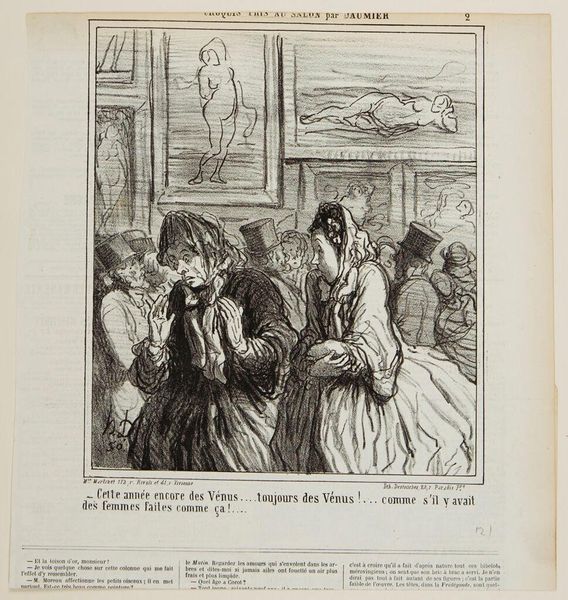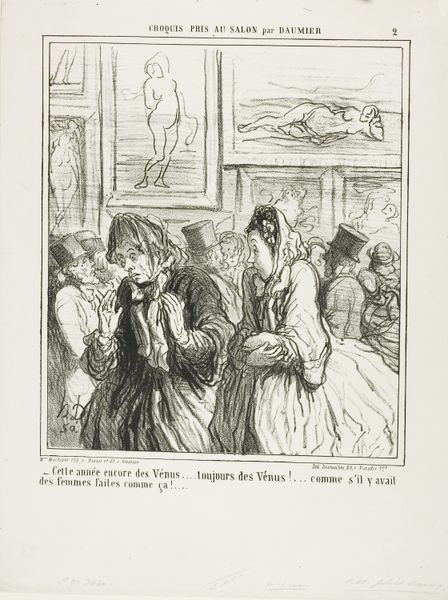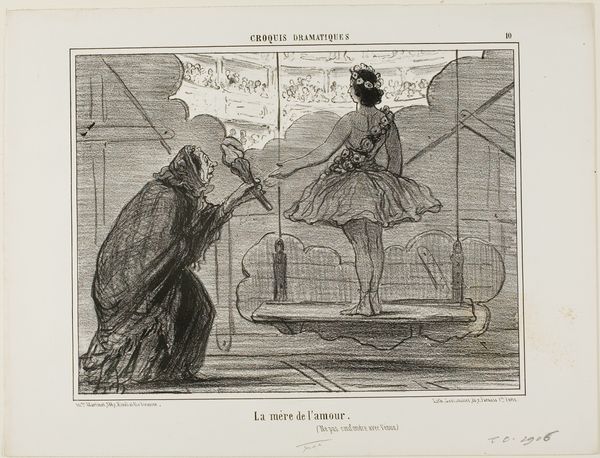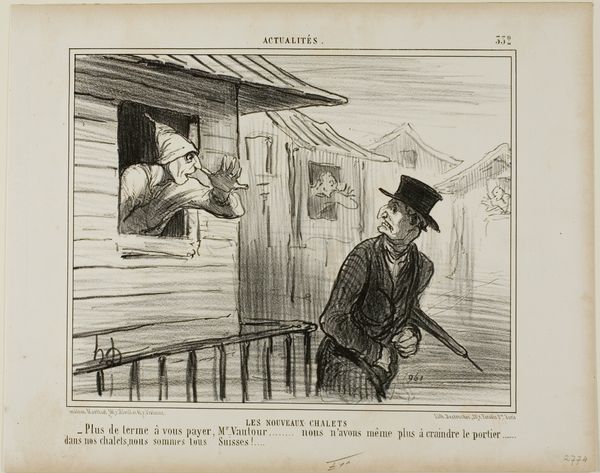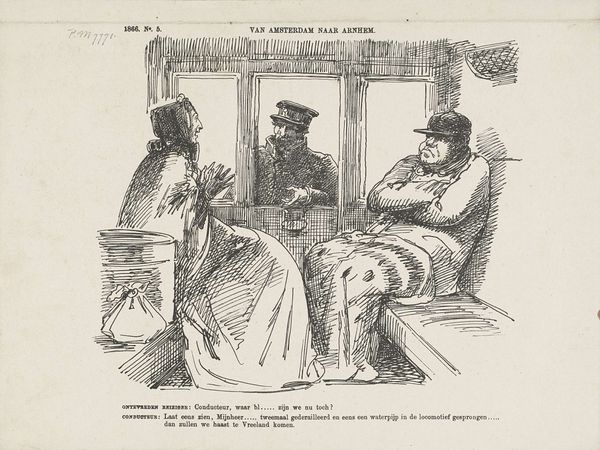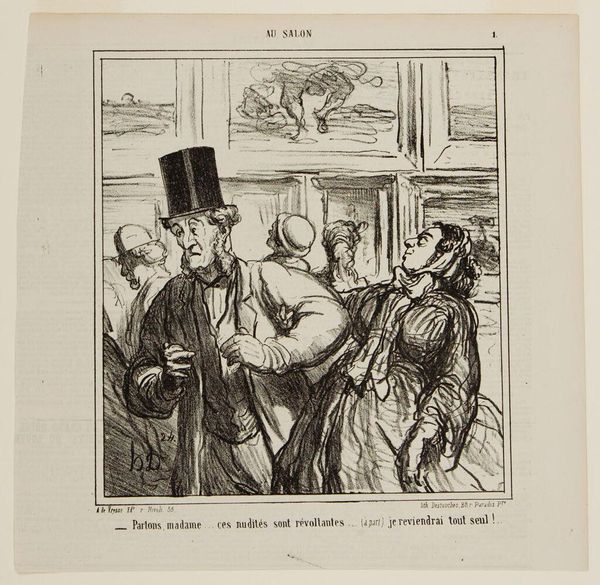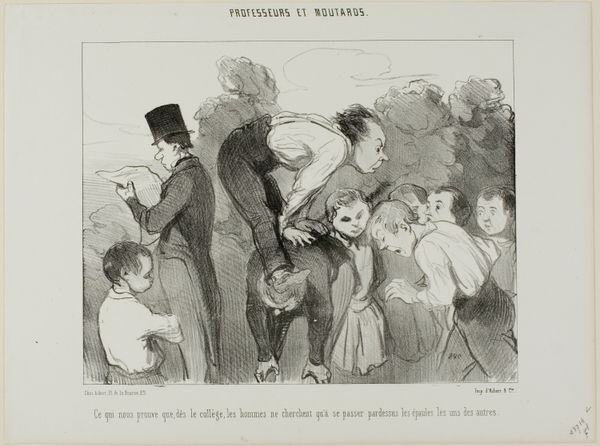
How Useful for an Opera Singer to Have a Family, plate 14 from Croquis Dramatiques 1857
0:00
0:00
Dimensions: 196 × 257 mm (image); 272 × 357 mm (sheet)
Copyright: Public Domain
Curator: This is "How Useful for an Opera Singer to Have a Family," a lithograph by Honoré Daumier created in 1857, now residing here at the Art Institute of Chicago. What strikes you first about this work? Editor: Immediately, the contrast. The stage, where the opera singer is illuminated, seems worlds away from the darkened theater box crowded with family, or at least, I presume they are family. There's a strong sense of confinement in that box. Curator: Indeed. Daumier often used his art to critique Parisian society. In this case, he's likely commenting on the social expectations placed upon performers, particularly women, and the perceived "burden" of family obligations within a performance-driven society. Editor: The way the family is drawn, almost caricatured, does lend itself to that interpretation. They seem… present, but not necessarily supportive. Look at their expressions, the angles of their noses. Are we meant to sympathize with the singer or critique these bourgeois spectators? Curator: Perhaps both? Daumier's caricatures often target the middle class and their values. Opera singers occupied a unique, somewhat precarious, position. Celebrated, yes, but also vulnerable to public opinion and reliant on patronage. He might be subtly highlighting the performative aspect of family life itself, a social obligation to "display" support. Editor: It makes me think about labor, too. The opera singer's body is literally on display, a commodity to be consumed, while the family, supposedly her support system, exists in this strange liminal space – are they there for her, or for appearances' sake? And who truly benefits from her performance? Curator: That's a crucial point. This print isn't just about family dynamics; it's about the economics of entertainment. Daumier underscores how the singer's talent becomes a form of capital, exploited both on and off the stage. And consider, too, that Daumier himself created prints for mass circulation. Editor: This adds a whole new layer! He himself was engaged in a commercial artistic endeavor while critiquing one. It reminds us that art-making itself is deeply embedded in socio-economic structures. Even critique has its price. Curator: A fitting end to our reflection, emphasizing the intertwined relationships that Daumier captured between the performer, her social entourage, and the artist. Editor: I’ll be pondering how we’re all complicit in perpetuating certain performances long after leaving here.
Comments
No comments
Be the first to comment and join the conversation on the ultimate creative platform.


